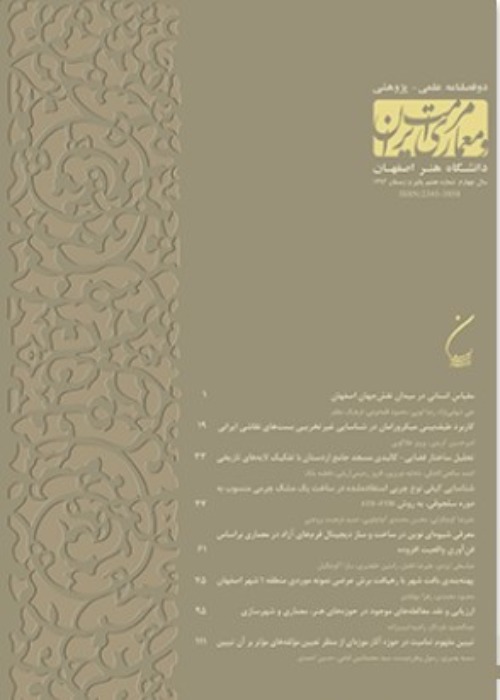Modeling and Analyzing Pedestrian Flow in Historical Fabrics with Social Dynamics and Revitalization (Case of Jolfa, Isfahan)
Author(s):
Abstract:
Reconstruction and revitalization of historical fabrics has long been the challenge for professions of urban conservation, planning, design, and architecture. In these fields, various theories have been proposed based on previous conditions and experiences. Failure to properly identify and analyze the urban historical fabric, lack of conducting and applying comparative studies, fail in understanding the specific characteristics of historical fabrics and lack of knowledge about the causes of historical fabrics recession could be named as a few of the major causes for most historical fabrics rehabilitation plans-and in a more comprehensive view, urban plans- to remain unfinished. Ignoring the social, cultural, identity and historical values set behind the face of historical fabrics as well as highlighting the administrators’ museum-based perspective on historical fabrics has led to a mere physical definition of reconstruction and has caused many historical fabrics repair either remain in studies stage or fail to result in desired purposes, even after conducting. Continuous social life is one of the major features of a valuable historical fabric; a concept which has no place in our recent urban refurbish. The viewpoint considered in this research on the historical fabric revitalization is a melange with the concepts in urban design and flow networks in historical fabric suffused with social dimensions. This research attempts to build a logic relationship between behavioral needs of the space users and the environment affordance in historical fabrics with a movement model which could motive the individuals to appear within the fabrics and restore vitality of urban districts and increase social interactions as well as increasing the social capital in urban places of historical fabrics and in this way, it could strengthen the sustainable social life which is fading due to the decline of environment qualities in historical fabrics. The ultimate goal in this research is to offer a model based on mathematics, formulating a strong defined network in relation with the main urban structure which could enhance the pedestrian flow according the region’s tourism potentials and provide conditions for increasing social interactions. Achieving the research ultimate goal i.e. increasing social interactions has been targeted based on environmental qualities and affordance and applying the available potentials and in this regard, the space capacity and urban upgrading costs to conduct the model have been taken into consideration. The proposed model, due to the great size of the problem and high complexity of the time, has been solved by Meta-Heuristic (NSGA II) technique. The results of the model solving determines the proper movement paths in the studied region which helps to identify strategic and key points in the region by using the Multi criteria Decision Making (MCDM) technique.
Keywords:
Language:
Persian
Published:
Maremat & memari-e Iran, Volume:1 Issue: 2, 2012
Page:
31
magiran.com/p1020647
دانلود و مطالعه متن این مقاله با یکی از روشهای زیر امکان پذیر است:
اشتراک شخصی
با عضویت و پرداخت آنلاین حق اشتراک یکساله به مبلغ 1,390,000ريال میتوانید 70 عنوان مطلب دانلود کنید!
اشتراک سازمانی
به کتابخانه دانشگاه یا محل کار خود پیشنهاد کنید تا اشتراک سازمانی این پایگاه را برای دسترسی نامحدود همه کاربران به متن مطالب تهیه نمایند!
توجه!
- حق عضویت دریافتی صرف حمایت از نشریات عضو و نگهداری، تکمیل و توسعه مگیران میشود.
- پرداخت حق اشتراک و دانلود مقالات اجازه بازنشر آن در سایر رسانههای چاپی و دیجیتال را به کاربر نمیدهد.
In order to view content subscription is required
Personal subscription
Subscribe magiran.com for 70 € euros via PayPal and download 70 articles during a year.
Organization subscription
Please contact us to subscribe your university or library for unlimited access!


